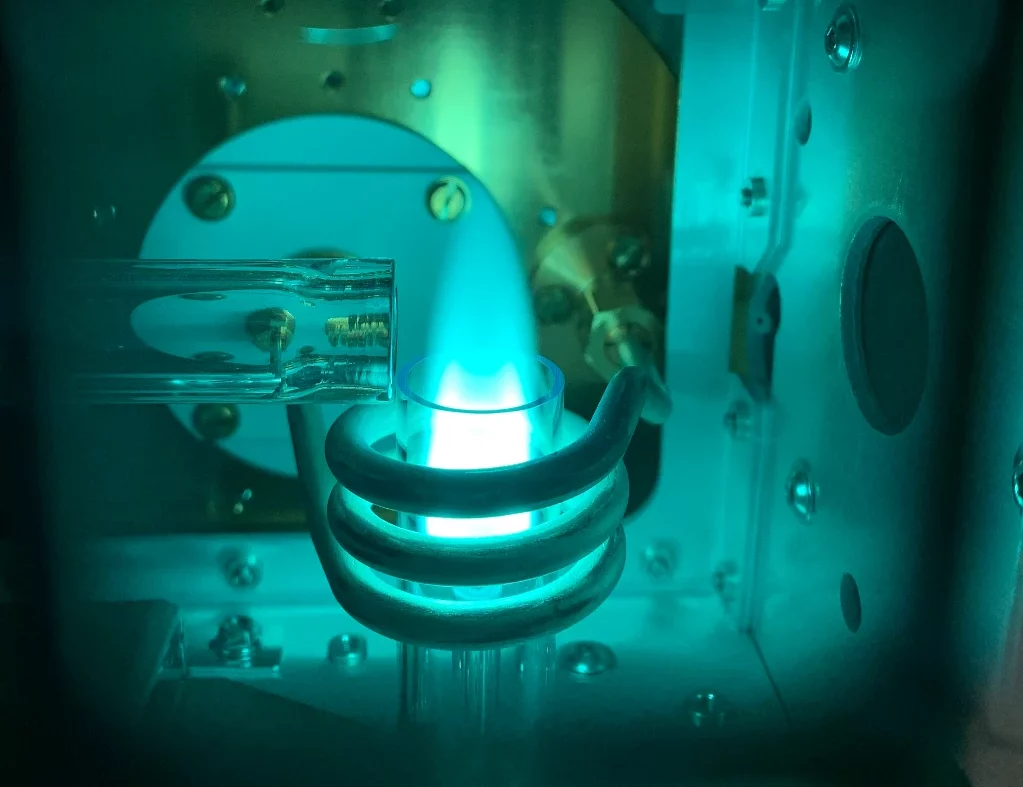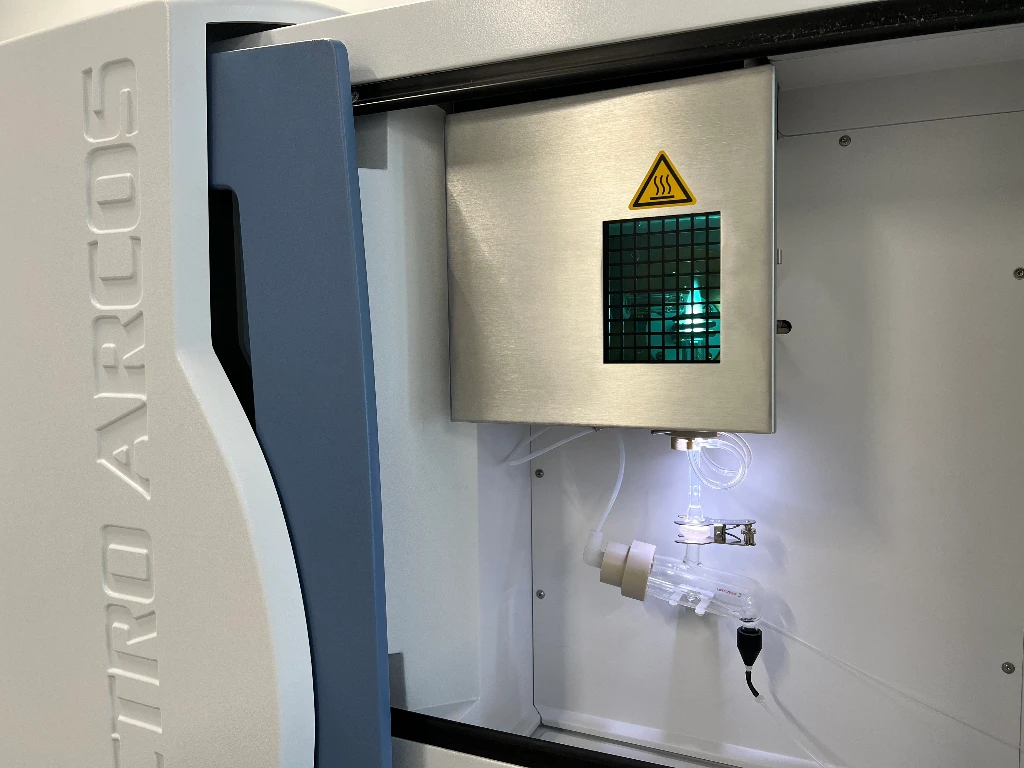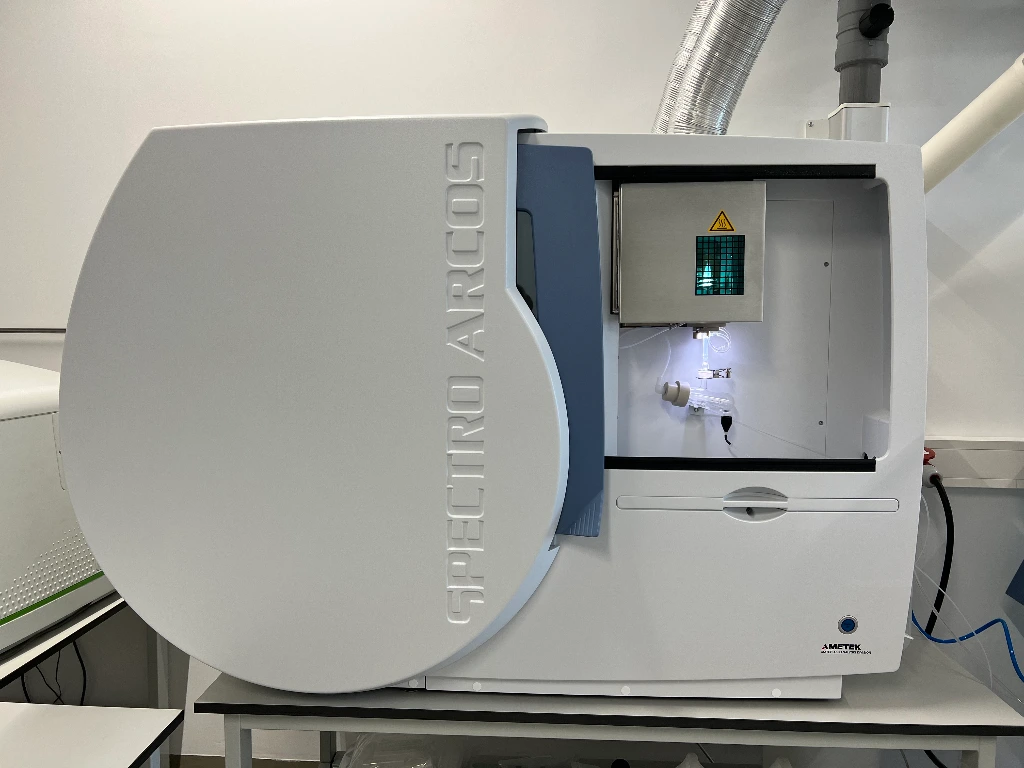Precise analyses with ICP spectrometry

Two ICP-OES spectrometry devices are available in the IWG analysis park for rapid analyses of all baths or special measurements.
When depositing metal coatings from galvanic and electroless baths, the metal concentration changes constantly. Since the deposited metals are missing from the bath, the baths must be continuously replenished according to the current flow (A*min) or deposition time and/or deposition area.
It is therefore necessary to regularly determine the main metals of the baths in order to check the ongoing additions and readjust the bath if necessary.
Are there any metals that don’t really belong in the bathroom?
Yes, because parts of racks occasionally fall into the tanks and slowly dissolve. Unsuitable materials such as busbars, screws or pump shafts that come into contact with the electrolytes can also dissolve. Furthermore, inadequate rinsing can carry over metals from other baths. For all these reasons, ‘foreign metals’ in the baths must also be determined.
Which methods are possible?
Several methods can be used to measure metal concentrations in liquids. For main components, for example, complexometric titration can be used. For alloy baths or the determination of impurities, flame spectroscopic measurements are the first choice for analyses as a rapid determination method. The concentration of metal ions can be quickly determined in comparison to standards using absorption or emission measurements.
ICP spectrometry – precious metal analysis at the highest level
In our state-of-the-art analytical laboratory, two ICP-OES spectrometers are available for analyses in order to be able to measure quickly even with high sample volumes.
For example, the two devices can be used in parallel to measure in the trace range, while more concentrated solutions are measured on the other device (less diluted baths for the impurities they contain). This avoids regular replacement or intensive cleaning of the sample introduction system, depending on the analytical task.
ICP in detail
Compared to AAS (atomic absorption spectroscopy), ICP-OES (inductively coupled plasma – optical emission spectroscopy) has the great advantage of being able to measure all emission lines of the sample heated in the argon plasma in a single measurement run.
The light emitted by the sample does not have a continuous spectrum, but consists of individual lines. The individual lines are specific to individual elements. For the measurement, the light emitted by the sample must be split into the individual wavelengths. The intensity of the light of each individual wavelength can then be measured using a detector. The intensity of the line is a measure of the concentration of an element.
We measure precisely using devices with prism splitting
More compact devices use an area-shaped CCD chip to measure the individual lines after an echelle optic. However, transition metals in particular produce very line-rich emissions, which makes it difficult to measure some elements with these devices.
Due to the line-rich spectra of the precious metals, IWG has opted for devices with prism splitting of the light and a large number of individual linear CCD chips arranged in a large circle (Rowland circle). Although these devices require more space, we have implemented them accordingly in our new laboratories.
Fast and precise analysis at IWG
We are therefore ideally equipped for rapid analysis of your baths or special measurements for all applications – from high concentrations to trace determinations (e.g. nickel release in artificial sweat).
Would you like to find out more about the IWG in-house laboratory?


